By Jaclyn Currie, Stantec
Meetings have been changed forever. By now, you know what it looks like: some team members logging onto calls from their homes, with others calling in from meeting rooms or their desks at the office. We’ve entered the hybrid era.
Yes, this digital workplace is part of our present and future, following the transformation of many forms of work brought on by the COVID-19 pandemic. Many of us have learned to work in a different way. But what are the effects of a hybrid office environment on teamwork? How can you keep people engaged and motivated, so they’re inspired to make great things happen?
As a team lead with the Power group at Stantec, these questions have lingered in my mind. I’m prioritizing team communication this year. I’d like to share some guidance that I’ll be using with my team over the coming year, to push our communication to the next level.
Increase participation
As a leader, it’s always important to think about what your team needs to be successful. Have you experienced a downturn in participation in the hybrid world? This may be attributed in part to people needing time to process information before participating and sharing their expertise. Distributing information in advance of a meeting leads to more valuable input from your colleagues. The same principle should be applied to face-to-face meetings, too. Don’t forget to:
- Send out an agenda and any reference material before a meeting.
- Give your colleagues time to digest the information before a meeting.
Communication styles are an important factor in virtual, hybrid, and face-to-face meetings. Elevating your team’s participation will provide more innovative, creative, and well-rounded solutions in a timely manner.
Be intentionally inclusive
In-person office environments have lots of buzz, providing natural opportunities to keep team members informed of new projects and upcoming opportunities. Virtual and hybrid working environments may leave some team members out of the loop, with larger impacts on junior and remote team members. This can lead to a disconnected team.
To stay connected, we need to be intentional about our communication. Here are some tips:
- Challenge your meeting invite list. This could be as simple as adding a few more members to your resource planning meetings. Then everyone will understand what’s happening.
- Check your informal conversations. Are you discussing key information or decisions that would be important for other team members to be aware of or involved in? Circle back to involve those who weren’t in attendance.
Building relationships in-person
Face-to-face communications help you develop deeper camaraderie with your team members. I call building these strong relationships “creating a connected team.” When local health authorities advise that it’s safe (in terms of COVID-19 restrictions), schedule some in-person meet-ups with your group. Strong relationships help drive teams toward success, together. Remember:
- Take opportunities to connect in-person and have face-to-face discussions.
- Champion group team-building meetings or activities in-person.
Never stop learning
To retain good communication and a connected team, look for opportunities to continuously improve. Chart the plan. Follow the plan. Then adjust the plan as conditions change.
If you’re noticing a lack in communication and participation, that means you may need to dig in and figure out what’s going on. Make changes based on what you learn.
Prioritizing strong communication
We’ve all learned how to work in a virtual world at an incredibly fast pace. To optimize your team’s communication, you may find yourself circling back to techniques you already had in the in-person world. If you make strong communication a priority, I know you’ll thrive as we continue to work in a hybrid environment. Good luck!
ABOUT THE AUTHOR – Jaclyn Currie is based out of the Fredericton office of Stantec, a global design firm. She works as an electrical and controls engineer and team lead, with over 15 years of experience and a diverse background in project work. She’s designed power distribution systems for food processing facilities, process networks for wood processing facilities, and electrical and controls designs across multiple sectors. The diversity of her background allows her to take on a variety of leadership and project management roles within Stantec

